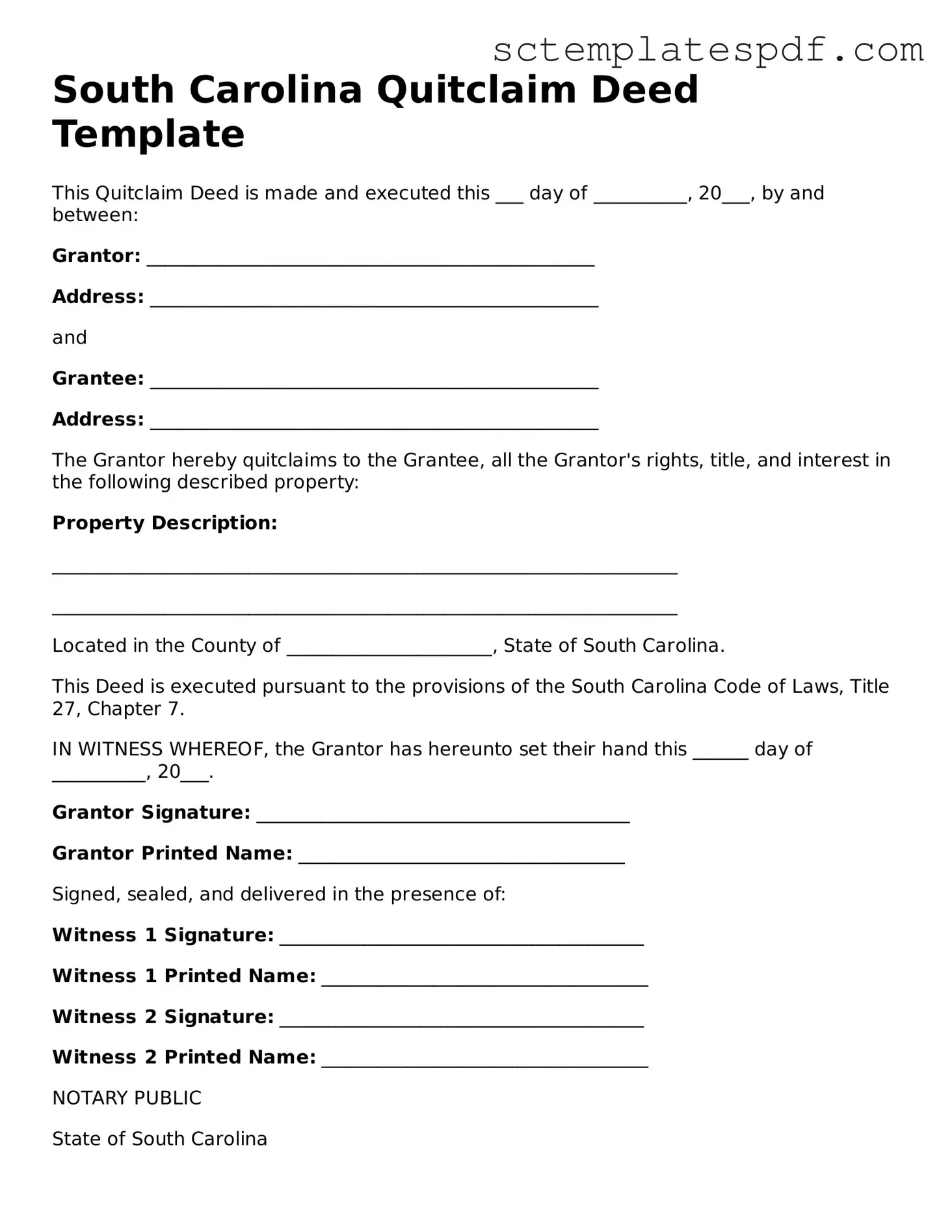Valid South Carolina Quitclaim Deed Document
A Quitclaim Deed is a legal document used in South Carolina to transfer ownership of real estate from one party to another without making any guarantees about the property’s title. This form allows the grantor to relinquish any interest they may have in the property, making it a straightforward option for property transfers. If you’re considering using a Quitclaim Deed, you can easily fill out the form by clicking the button below.
Fill Out Your Quitclaim Deed
